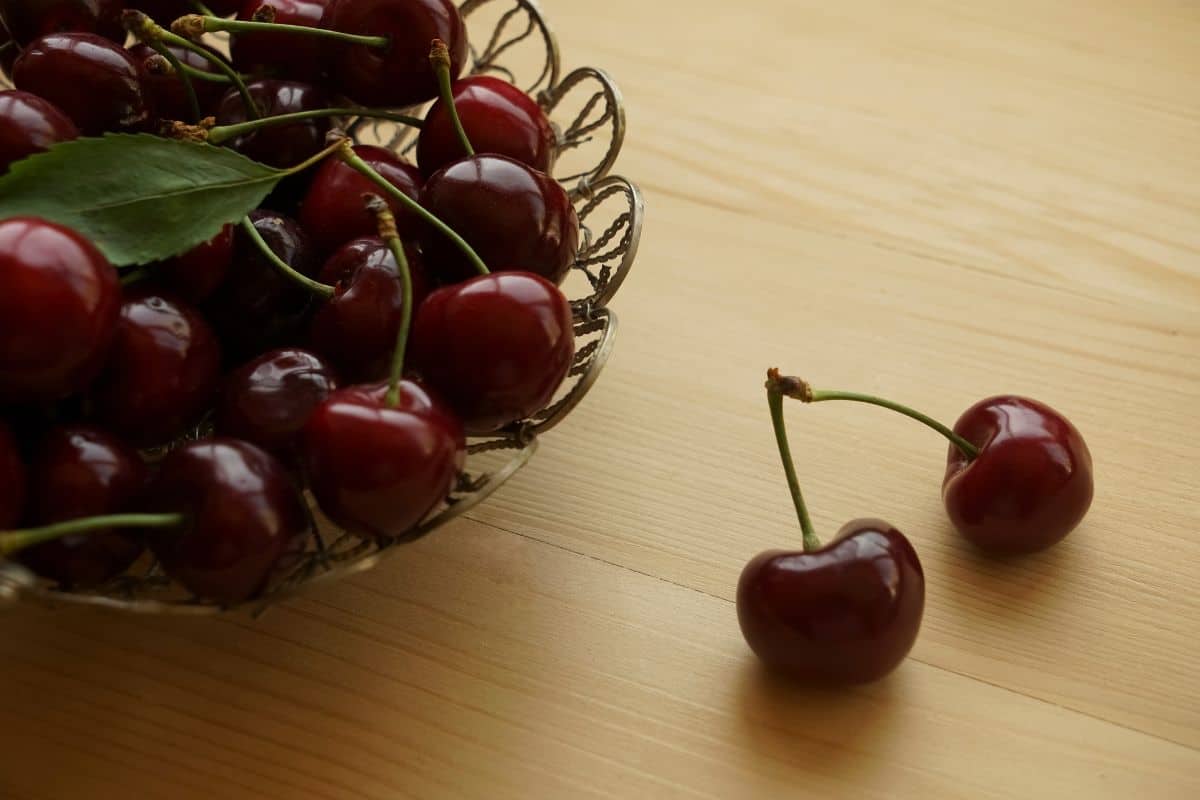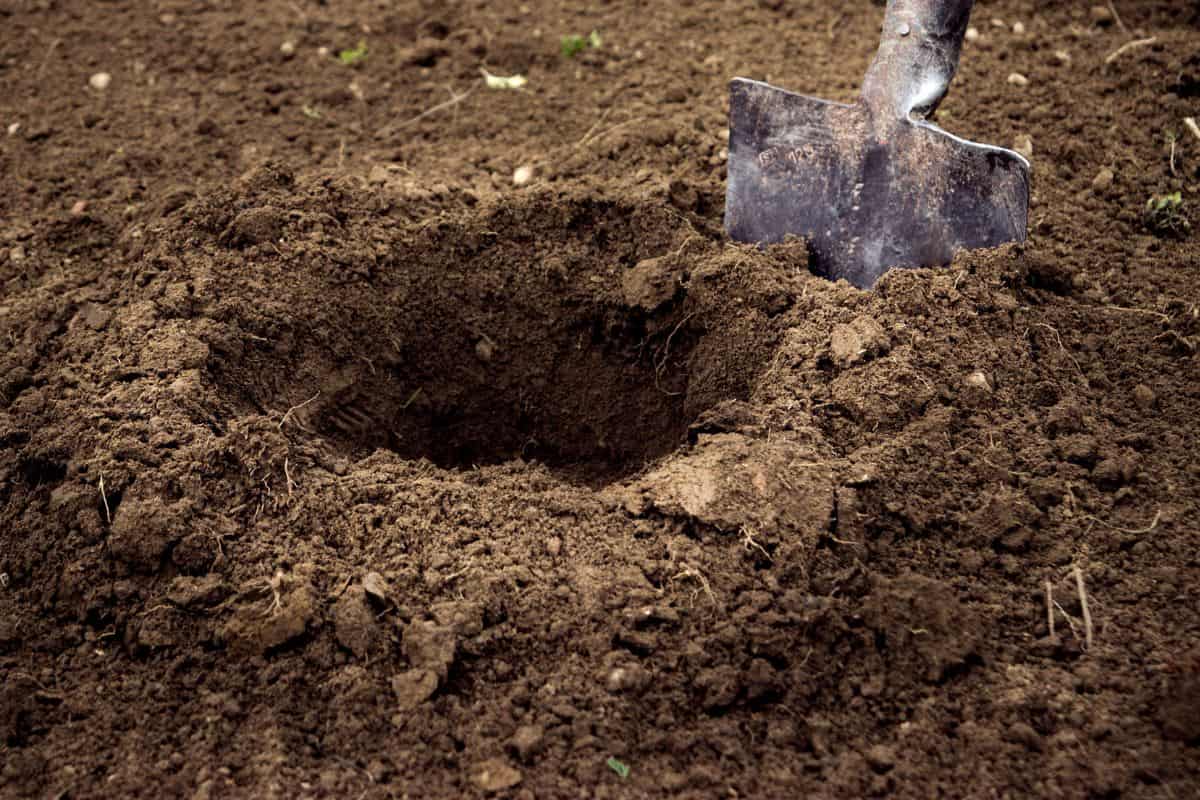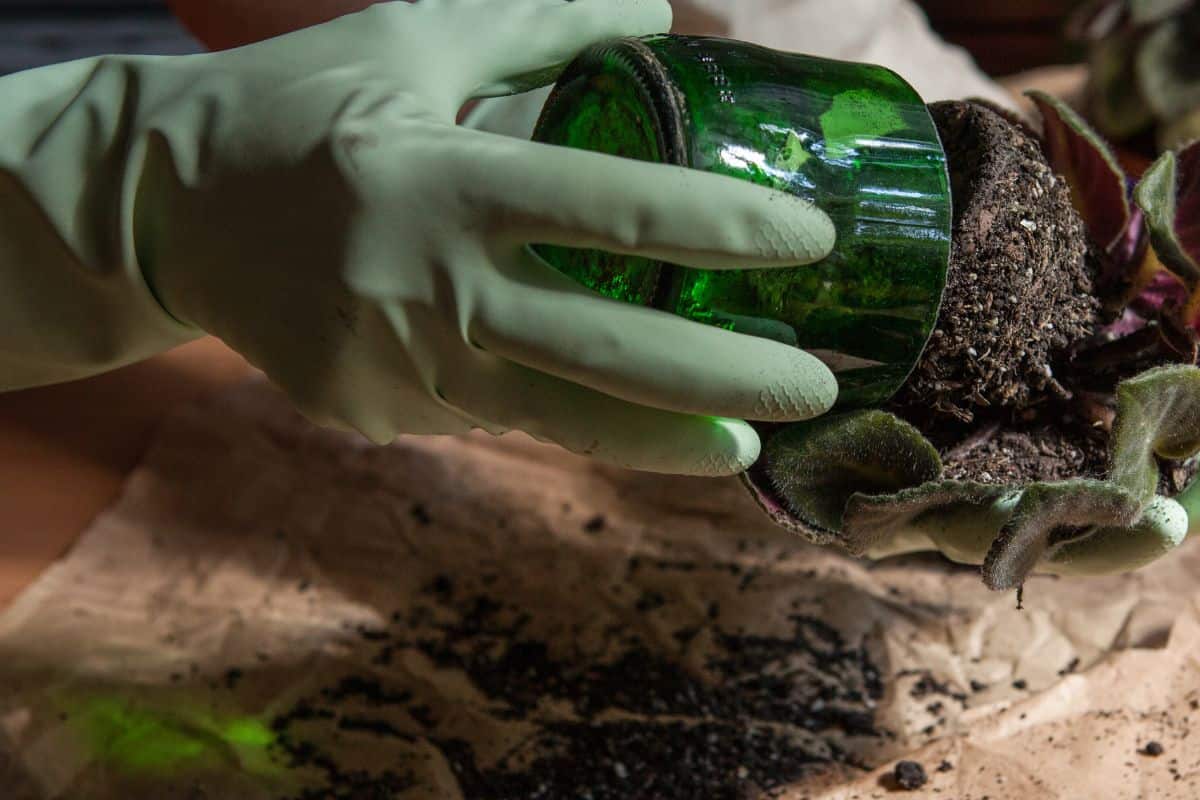The vibrant cherry trees are pleasing to the eyes, especially when blossoming. Not only that, but they also produce delicious and enticing fruit! We know that different zones have different climates, but how does that affect planting your own cherry trees? We've done the leg work, and here's what we found out!
Cherry trees are vulnerable to root rot, so it needs well-draining soil to grow. With that, the best time to plant cherry trees is during spring and fall because the soil is moist and soft. This is true regardless of which hardiness zone you live in. However, sweet cherries grow best in zones 5 - 7 and sour cherries in zones 4 - 6.
In this article, we will get to know further the family of cherry trees so that you will also get to identify what suits your preference. Also, planting cherry trees requires careful hand, so we'll discover some best ways to do it successfully. Keep on reading below to know more!
![ripe, sweet cherries on the tree in the garden. - When To Plant Cherry Trees By Zone? [And Tips For Best Growth]](https://gardentabs.com/wp-content/uploads/2023/05/ripe-sweet-cherries-on-the-tree-in-the-garden.-When-To-Plant-Cherry-Trees-By-Zone-And-Tips-For-Best-Growth.png)
When To Plant Cherry Trees in Different Zones

Cherries are delicious and cherry trees also produce some of the most beautiful flowers. It's no wonder that you would want to grow some cherry trees at home. Choosing the right time to plant your cherry trees is important for the health and productivity of your trees.
The best time to plant cherry trees is in early spring or late fall, a few weeks after or before frost. This is when the ground is the easiest to work.
You may wonder if your hardiness zone affects the best time to plant your cherry tree. It does, to an extent, since the last and first frost dates will vary from location to location, but the general rule is the same.
Zones are important in terms of choosing your cherries though. Sour cherries handle the cold a bit better than sweet cherries. Most sour cherry varieties are cold-hardy in zones 4 - 6 and most sweet cherries in zones 5 - 7.
Going any colder and your tree will suffer during the deep chills of winter. If you go any warmer, your tree might not receive enough cold days to produce flowers and fruit in the spring and summer.
Types of Cherry Tree

Before jumping into planting, you must first know what kind of root to plant, depending on your needs. Mainly, you can choose between potted or bare-root cherry trees and buy them in any nearby botanical store. Now, what makes them different?
Potted Cherry Tree


Check out this dwarf cherry tree on Amazon
Potted cherry trees are rooted in a container and are usually grown in greenhouses. They have to be kept in a pot that is deeper and larger than the tree's root ball. This is to allow space for the cherry tree's growth.
Since it has to be in a pot or container, there must be a hole for the water drainage. If the hole is too large and lets dirt through, put a mesh screening or fabric on the bottom of the pot so the soil will not fall from it.
One advantage of potted cherry trees is that they are available all year round.
Bare-root Cherry Tree
A bare-root cherry tree is initially freshly harvested from the soil, meaning it has no compost connected to its roots yet.
It is primarily planted in raw soil in the ground, so it is only available around spring and autumn. When bought, bare roots are simply cloth-wrapped.
Sweet or Sour? Choose Your Cherry's Taste
Other than what type of roots you prefer, you might also want to know which flavor you like to hit your tastebud.
Like the red and green apple that comes from one family, cherry trees also have variations in taste after blossoming despite being rooted in one fruit family. The two types of cherries are sweet and sour.
Sweet Cherries

The sweet cherry tree or Prunus avium is said to be originated in the Black and Caspian Seas.
This type of cherry is similar to a plum texture due to its thickness and sweet taste. Most sweet cherries grow well in hardiness zones 5 through 7. Note that they are usually not self-pollinating, so you will need two to three trees for them to grow.
It needs a spacious garden, but if you have a limited area, you can resort to the self-pollinating cultivar, Stella.
Some of the sweet cherry trees are:
- Black Tartarian (Early)
- Bing (Midseason)
- Stella (Late)
Sour Cherries
Sour cherry trees are also known as tart cherry. Their origin is found in some parts of Europe and southwestern Asia.
Compared to sweet cherries, sour cherries are smaller in size and grow best in hardiness zones 4 through 6. In addition, it is self-fertile, so it does not need more pollination trees, unlike sweet cherries.
With their sourness, tart cherries are not usually eaten raw. They are more suited for preservation and other culinary uses.
Some of the best sour cherry trees are:
- Early Richmond (Early)
- Montmorency (Midseason)
- Meteor (Late)
How to Plant Cherry Trees

As mentioned, cherry trees are quite vulnerable, especially when the soil is too hard from the cold or too baked from the sun. Also, the planting can vary since cherry tree roots have two types.
To prep your cherry tree, the essential materials are as follows:
- Shovel
- Supporting rod
- Gardening shears
- Potting soil
- Compost soil
- Protecting net, Coconut fiber
With that, here are the ways in proper planting which you can do even in your own backyard.
Planting Bare-root Cherry Trees
Soak the Roots in Water
To prepare a bare-root cherry tree for planting, soak the root in water for about one to two hours but no more than six hours. This will keep the roots alive while you are digging the soil bed.
Dig a Spacious Hole

Dig a large hole and put the most nutritious topsoil on the bottom of it. This will help the roots grow.
For your topsoil, mix in manure, compost, and neutral coir (or peat as an alternative but note that it can affect the soil Ph).
Place the Cherry Tree in the Soil
When the topsoil mixture and the hole space are ready, it is now time to put the cherry tree and its roots in the hole.
Hold the trunk to keep the tree standing firmly in the center. Do not forget that the graft union (dwarf and semi-dwarf types) should be two to three inches above the ground. To identify it, look for a bumpy area on the tree's lower trunk.
Filling In the Hole
Gradually put the soil into the hole and make sure to leave no space for the air pockets by softly compacting it downwards.
Planting Potted Cherry Trees
Keep the Roots Hydrated
The tree should have been watered shortly before you purchased or received it. However, if you will not plant it right away, keep the soil damp but do not soak it in a container of water to avoid root rot.
Also, keep it in an isolated place to keep it in shape.
Remove the Roots from the Container

To safely remove the tree from its container package, hold both sides of the pot gently to slide the tree out. If it does not come out easily, try to grasp the inner edges of the pot to loosen the tree out of it.
You need to remove it immediately from the package because most don't have a hole in the bottom, which means no water drainage and greater risk of root rot.
Clean the Roots and Plant It
Detached roots might still have some intact soil in them. So, you have to spread it and carefully untangle the roots to clean them from the latter soil.
Repeat the process above when the roots are already clean, and the tree is safe from the container. Put the tree in the center hole, backfill with topsoil, and cover with soil.
The stake or pole that keeps the tree upright from its delivery can remain until planting. But if you know how to do it again, you can replace the stake with a new one.
Maintaining Your Planted Cherry Tree
Taking care of your planted cherry tree has no difference in both types. Hence, you will be applying some techniques for both of them to thrive for the next few years. Typically, it will take four years before you harvest the fruits, and expect 30-5- quarts per season.
To have a successful harvest, you need to maintain the tree, especially during its first years. Without further ado, here are some tips to take care of your cherry tree.
- After blossoming, drape the tree with a net to save the fruits from the birds around.
- Apply mulch or something like manure to cover the soil's surface. With mulch, the moisture of the soil is maintained, and it is safe from the changing weather and temperature.
- Fertilize the tree yearly and compost it only with slow-release fertilizers. The immature roots can only take in so many nutrients and can be damaged by excessive fertlizing.
- Water the cherry trees, especially during the summer, to prevent the roots from drying and the soil from baking.
- Cut out the black leaves or prune them during winter but not fall to let the new wood grow. Do it yearly as well.
Frequently Asked Questions
Where do cherry trees grow best?
Plant cherry trees in a location where the full sun is accessible. Full sun in this context is taken as six to eight hours of sunlight. This will supply vitamins to the tree and keep it safe from fungal infections.
What is the sweetest cherry variety?
To taste the sweetest cherry, choose the black ones. The well-known type is the Bing cherry, which you can identify by its dark color and heart-shaped figure. You may also like Chelan, Sweetheart, Lambert, and Tulare cherries.
Conclusion
![ripe, sweet cherries on the tree in the garden - When To Plant Cherry Trees By Zone? [And Tips For Best Growth]](https://gardentabs.com/wp-content/uploads/2022/08/ripe-sweet-cherries-on-the-tree-in-the-garden-When-To-Plant-Cherry-Trees-By-Zone-And-Tips-For-Best-Growth.png)
Cherry trees are like a beautiful dream from their blossoming period to their fruiting time. They grow best in hardiness zones 4 to 7, depending on the variety. Regardless of which zone you live in, you should plant them in early spring or late fall for the best results.
If you like this article, we also have more interesting ones for you. Check out those below!


